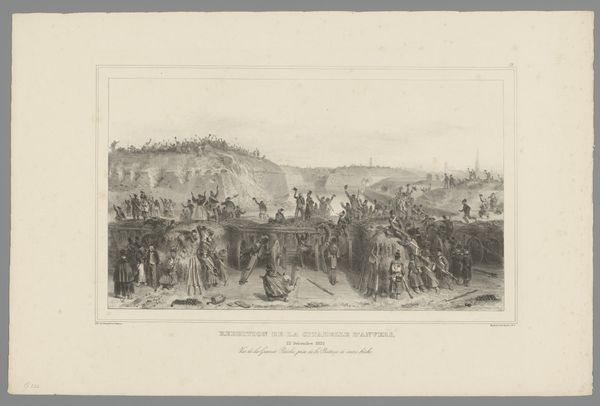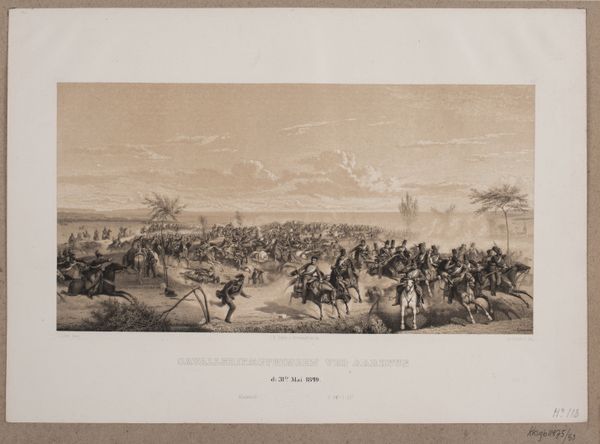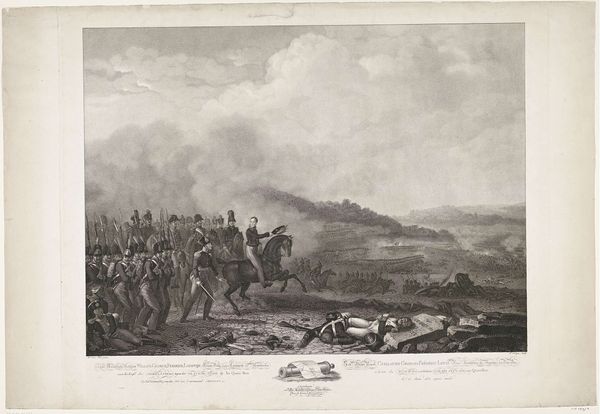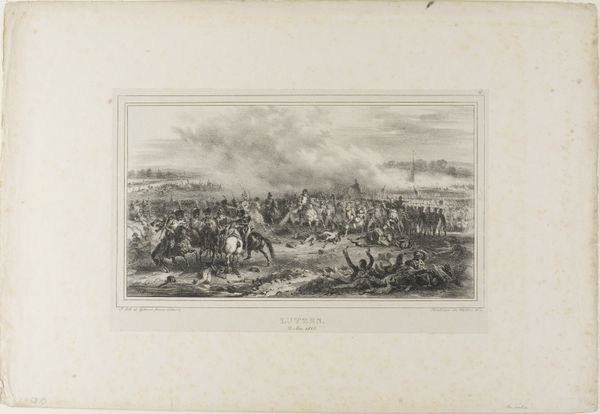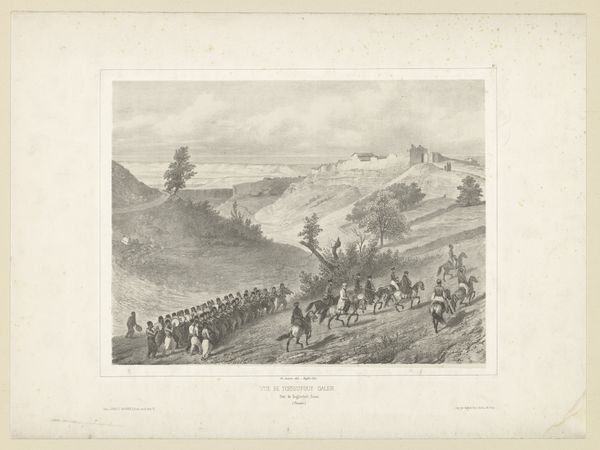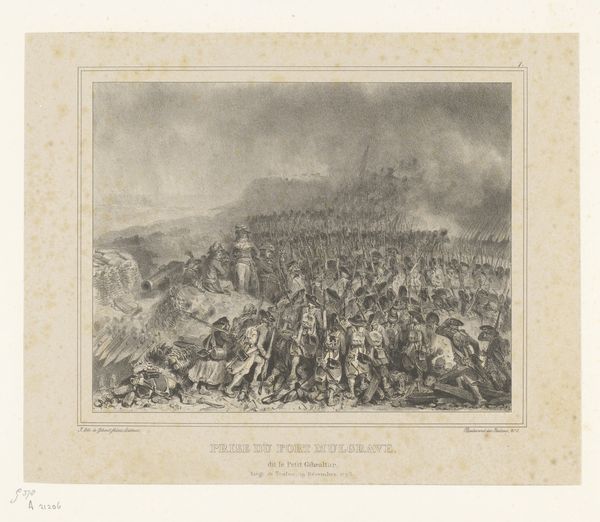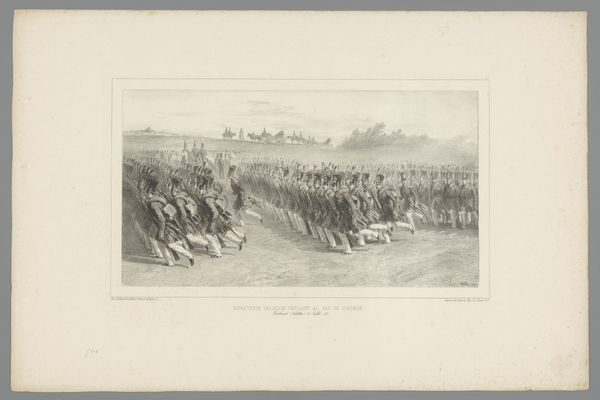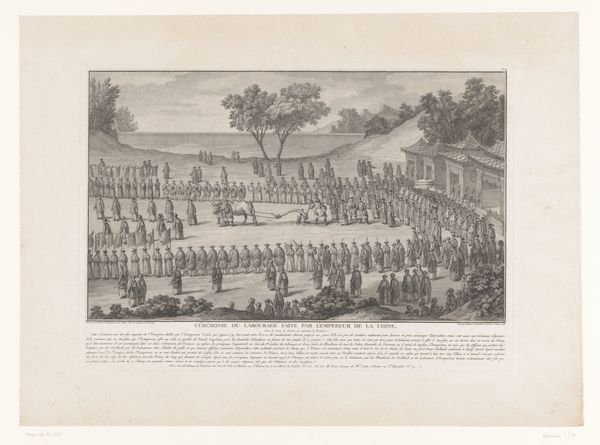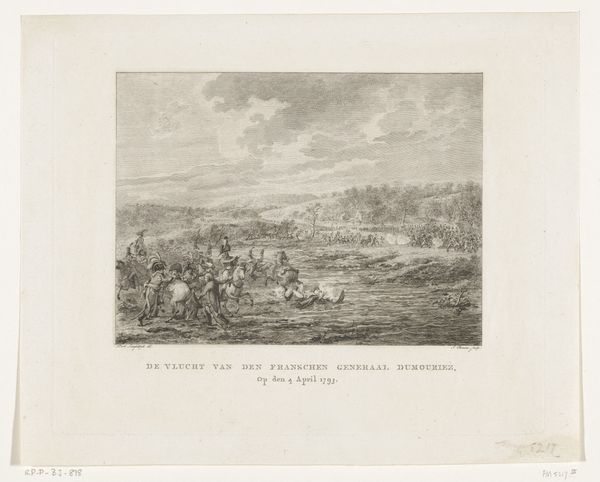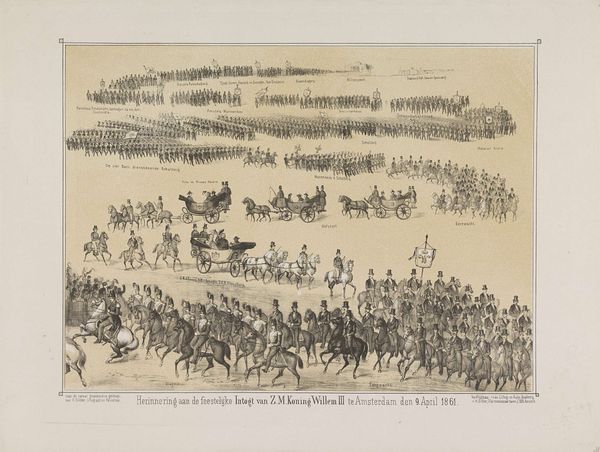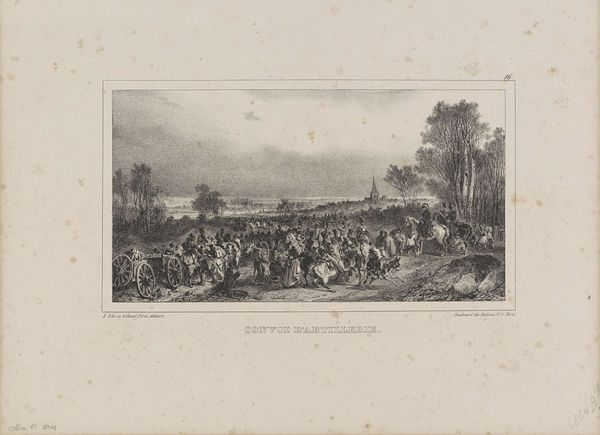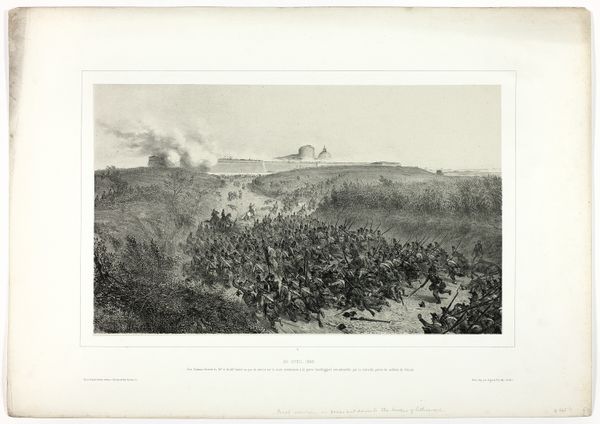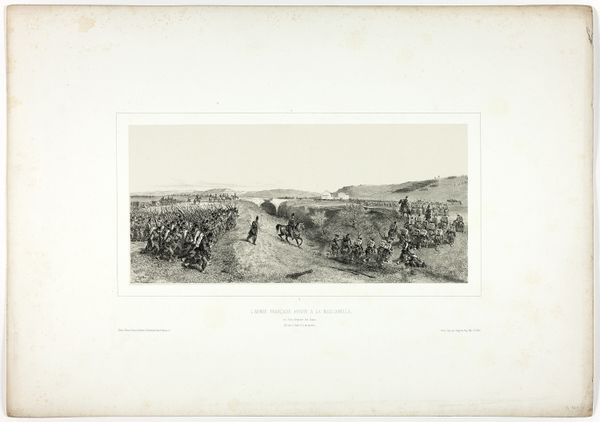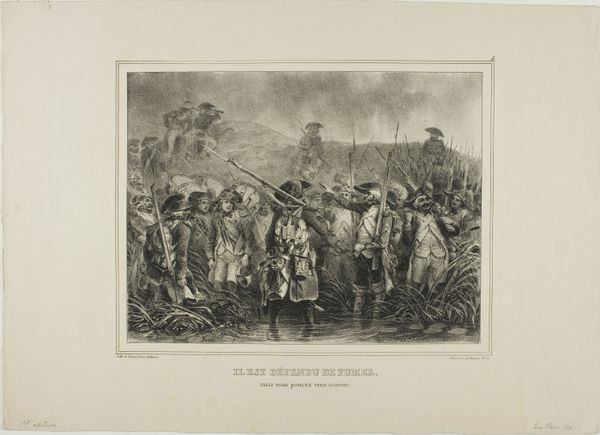
Capture of the Villa Pamfili, from Souvenirs d’Italie: Expédition de Rome 1852
0:00
0:00
Dimensions: 230 × 393 mm (image, incl. tint); 233 × 396 mm (primary support); 401 × 569 mm (secondary support)
Copyright: Public Domain
Editor: Here we have Auguste Raffet's "Capture of the Villa Pamfili, from Souvenirs d’Italie: Expédition de Rome," a lithograph from 1852, now at the Art Institute of Chicago. I’m struck by the overwhelming sense of military force depicted here. What narratives do you see in this piece? Curator: This print offers a lens into the complexities of 19th-century European power dynamics, specifically focusing on the French intervention in Rome. Raffet portrays not just a military action, but a moment laden with political and ideological weight. How does this capture of Villa Pamfili reflect France’s ambitions and its relationship with Italian nationalism and papal authority during this period? Editor: I see a clear hierarchy represented by the wall dividing the soldiers, which literally and figuratively separates the victors from the rest of the scene. Curator: Exactly. This division reinforces a narrative of dominance. The print invites us to consider the social and political consequences of such interventions, especially how military actions reshape landscapes and disrupt existing power structures. To what extent can art such as this document become tools that either reinforce or critique imperial narratives? Editor: So, it's less about glorifying victory, and more about questioning the implications of military actions? Curator: Precisely. We can examine this piece through the lens of postcolonial theory, understanding how it represents and potentially reinforces a Western gaze upon Italy. Consider the role of Romanticism in idealizing landscapes even while those landscapes are sites of conflict and occupation. This artwork encapsulates the contradictions inherent in romanticizing military exploits, making us aware of our biases as we engage with the art. Editor: That reframing shifts my understanding of Raffet's intentions. Now it seems the artwork functions as both a historical document and a commentary. Curator: Indeed. By looking at art this way, we actively engage with history, not merely as a series of events, but as a set of ongoing debates about power, identity, and representation.
Comments
No comments
Be the first to comment and join the conversation on the ultimate creative platform.
